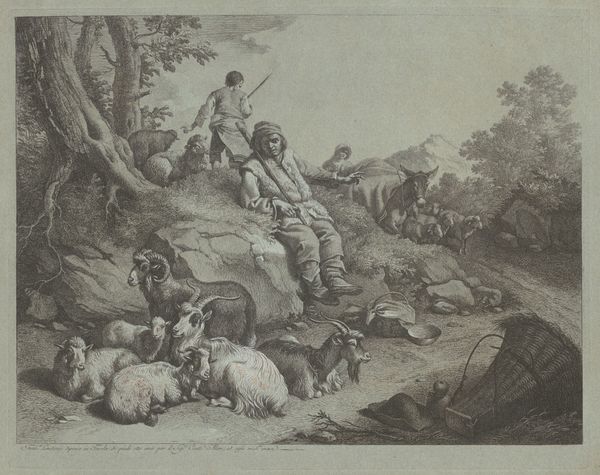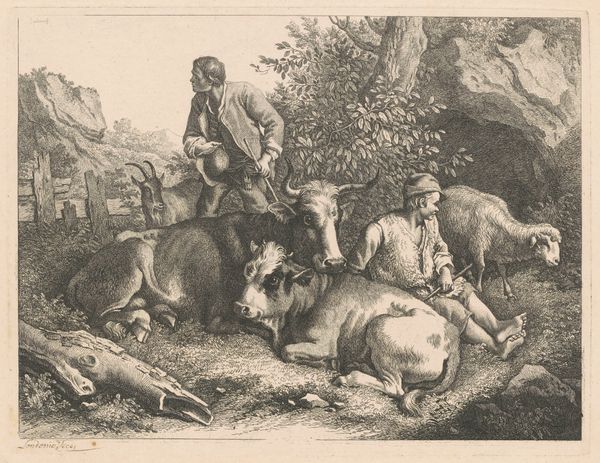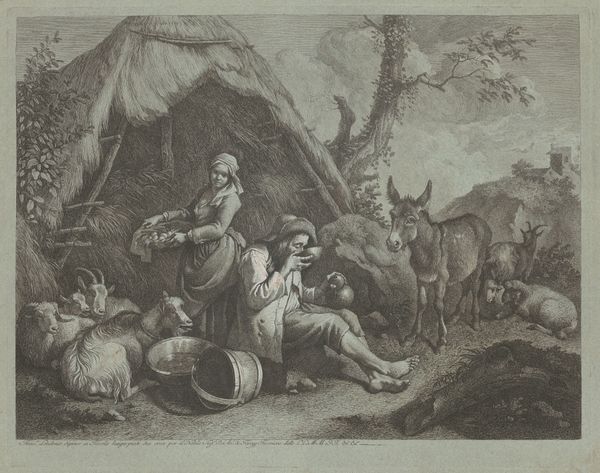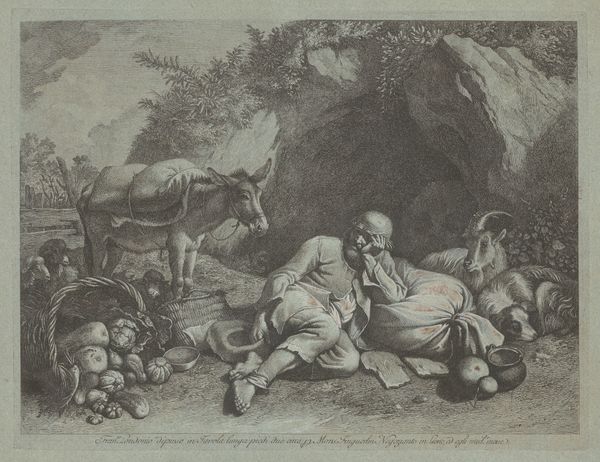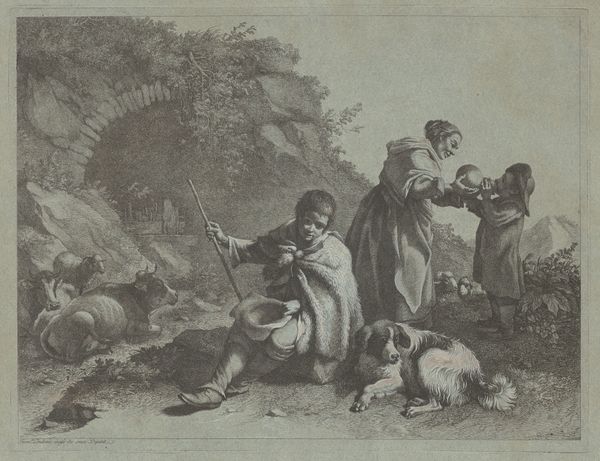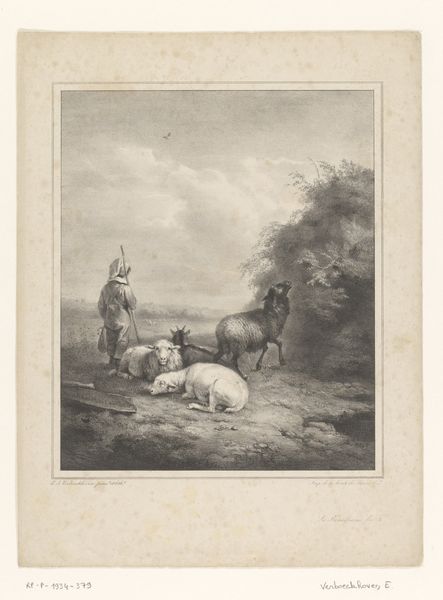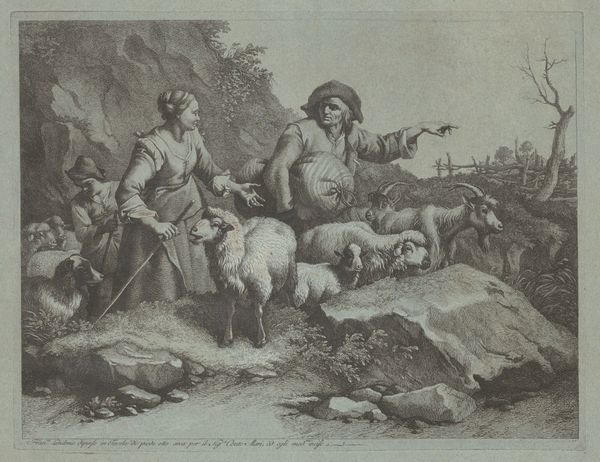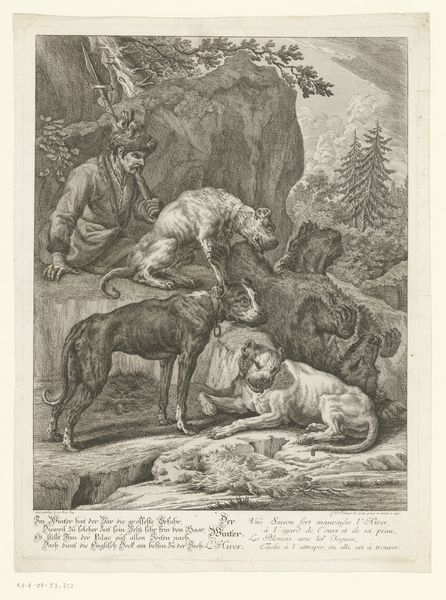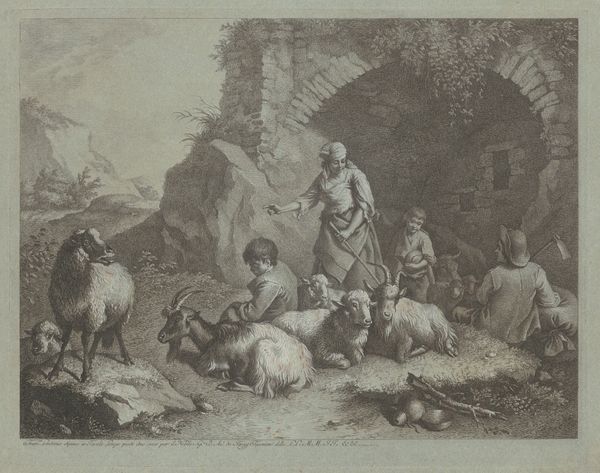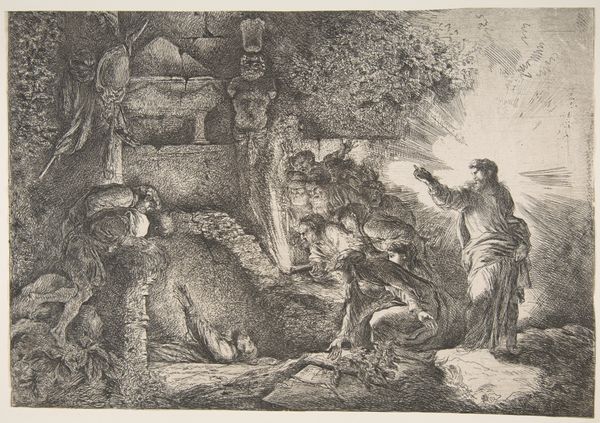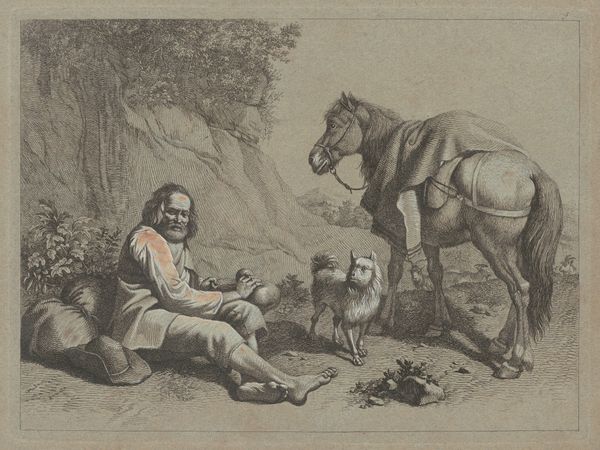
Old, Bald-headed Shepherd, Seated Shepherd Boy and Flock after 1766
0:00
0:00
drawing, print, pencil, charcoal
#
drawing
# print
#
landscape
#
charcoal drawing
#
figuration
#
pencil drawing
#
pencil
#
genre-painting
#
charcoal
#
charcoal
Dimensions: plate: 33 × 42.2 cm (13 × 16 5/8 in.) sheet: 39.8 × 50 cm (15 11/16 × 19 11/16 in.)
Copyright: National Gallery of Art: CC0 1.0
Curator: This drawing, “Old, Bald-headed Shepherd, Seated Shepherd Boy and Flock” by Francesco Londonio, likely dates to after 1766. It's a pencil and charcoal piece, and exists as a print as well. What are your first impressions? Editor: The level of detail for a drawing is remarkable, especially the rendering of the animals' coats. It gives the scene an interesting texture. But also there's a certain... stillness, maybe even a kind of weariness, that pervades the whole composition. Curator: I think the medium really emphasizes that feeling. The smudgy charcoal contributes to this hazy atmosphere. Londonio seems less interested in topographical accuracy here than conveying a pastoral ideal as constructed by the wealthy landowners commissioning this work. How do depictions of rural labor play into social power? Editor: That's an important point to raise. Consider the socio-economic context in which these idyllic pastoral scenes were produced. They served as propaganda to diffuse the very real social inequalities of the time. Was Londonio purposefully romanticizing agrarian labor for a privileged urban audience? Curator: Exactly! It's fascinating how Londonio’s technical skill, specifically the materiality of his charcoal and pencils, intersect with a highly curated projection of peasant life, reinforcing existing power dynamics through art. Did wealthy patrons even recognize their own influence? Editor: Perhaps, but regardless, artwork is also enmeshed in social structures. Examining whose stories get told—and how they’re visually represented—helps us to decipher larger societal beliefs and values in the eighteenth century, particularly ideas related to class and rural life. The politics of image-making become pretty visible here. Curator: Thinking about the accessibility and circulation of this image as a print, it suggests this “idyllic” version of rural life could permeate different levels of society. Even printed, Londonio's choices with materials still carry those embedded connotations. Editor: A close consideration reveals the artifice. Even idyllic visions are manufactured and circulated according to various motivations, conscious or not. Curator: It’s a stark reminder to look beyond face value. Editor: Precisely, the context and material considerations change everything about how you see it.
Comments
No comments
Be the first to comment and join the conversation on the ultimate creative platform.
